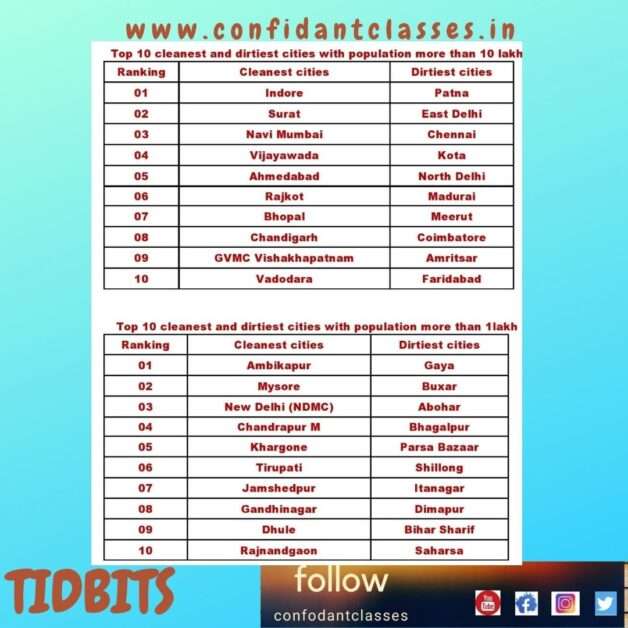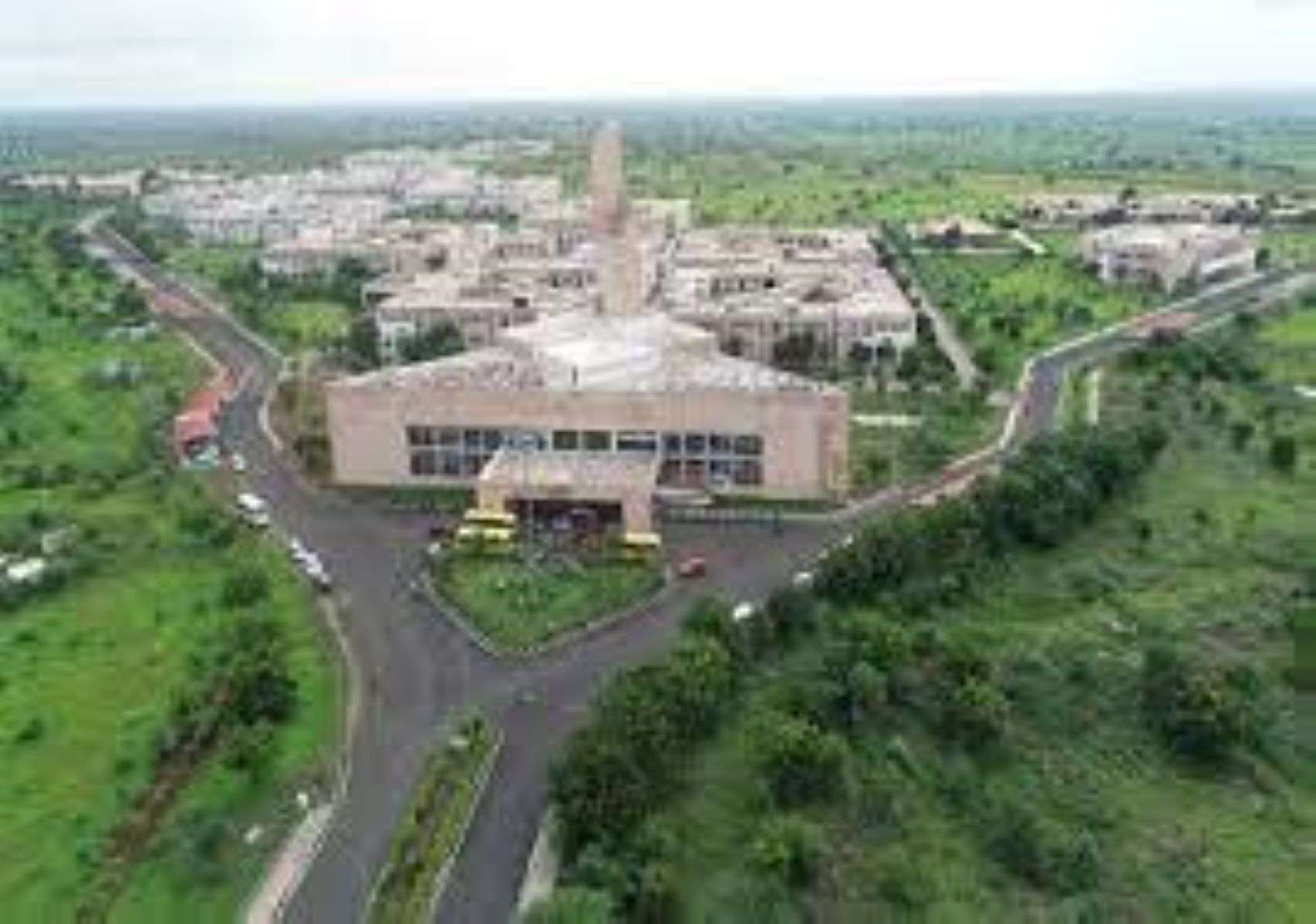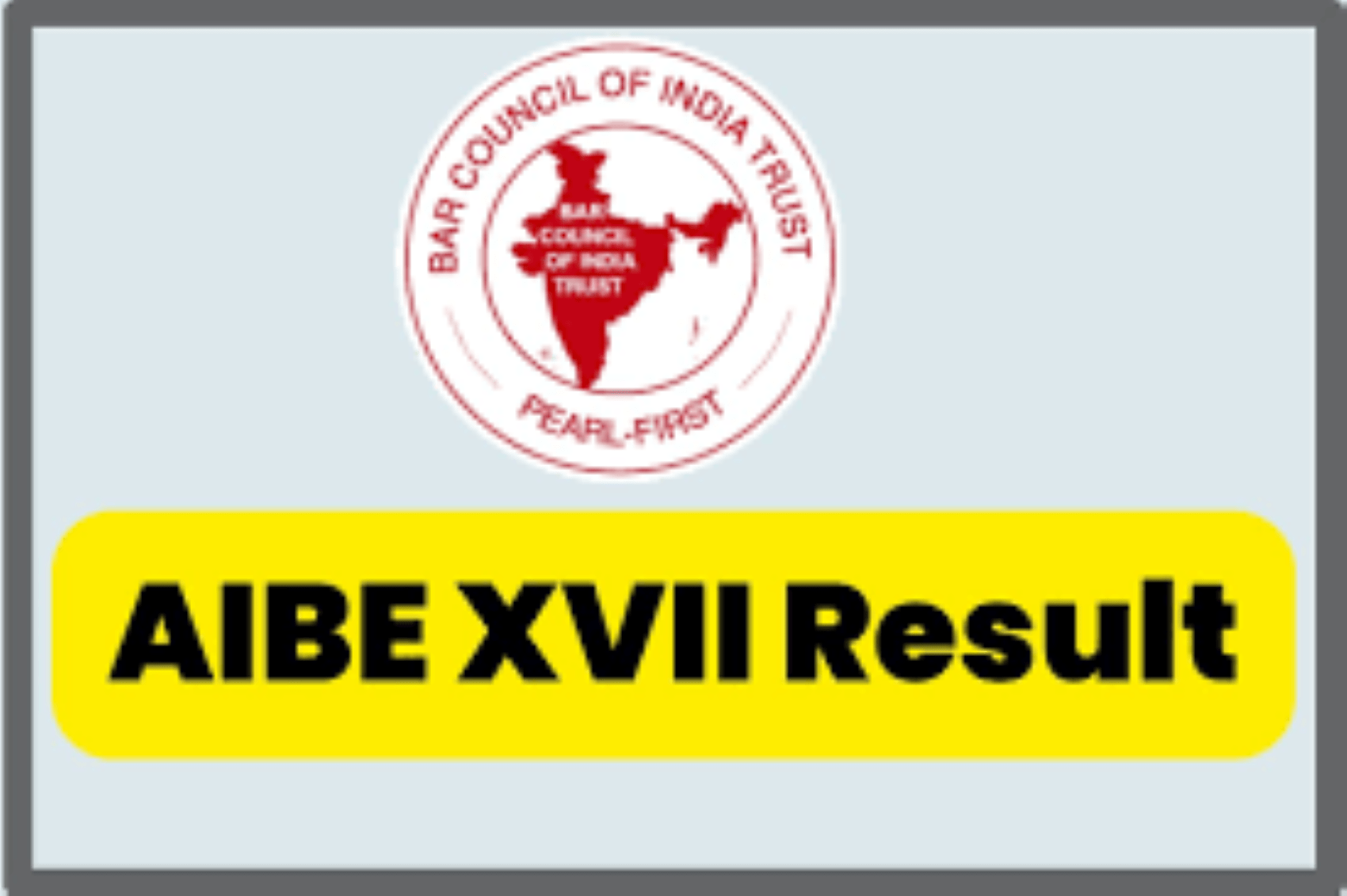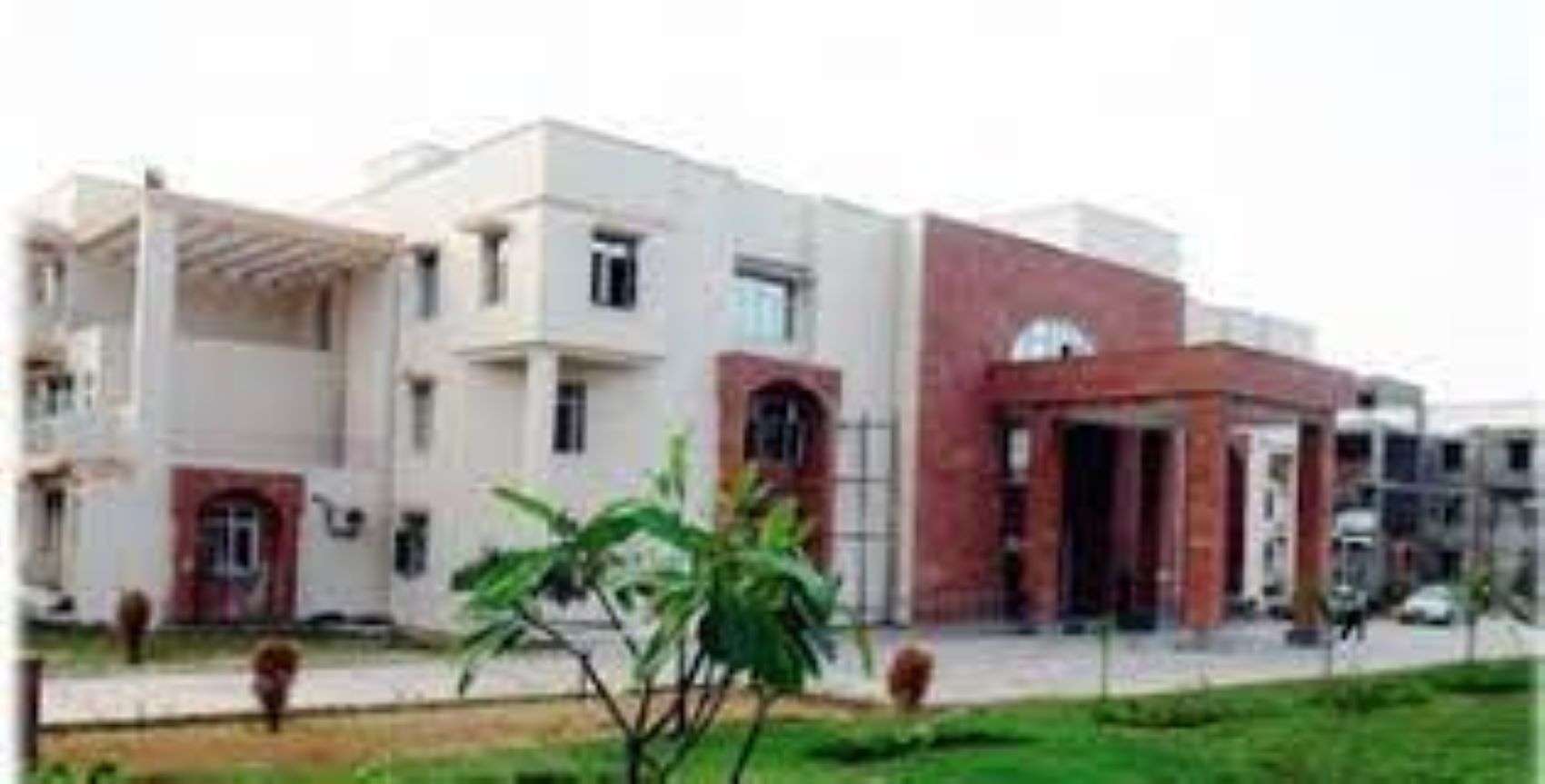Indore in Madhya Pradesh maintained its position as the cleanest city in India for the fourth year in a row, according to the results of the Swachh Survekshan 2020 survey. While Surat from Gujarat was ranked second, Navi Mumbai from Maharashtra ranked third. Varanasi was rated the “best city on the Ganges” in the central government cleanliness survey.
- The results were announced by the Minister of the Union of Housing and Urban Affairs, Hardeep Singh Puri, in a ceremony. During the event, a book entitled “Report on the Assessment of 97 Ganges Cities” was also published.
- This is the fifth edition of the survey submitted by Prime Minister Narendra Modi in January 2016. In the first edition of the survey, Mysuru won the award for the cleanest city in India.
- A total of 1.9 million citizens from 4,242 cities across the country participated in the survey conducted by the Ministry of Housing and Urbanism.
- In the category of population less than 1 lakh, Karad from Maharashtra ranked first, followed by Saswad and Lonavala.
- Chhattisgarh was ranked as the cleanest state in India in the category of “less than 100 local urban authorities”, while Jharkhand was awarded as the cleanest state in India in the category “more than 100 local urban authorities ”.

- The announcement of this year’s results has been delayed due to the Covid-19 pandemic. The survey, which covered 4,242 cities and gathered 1.87 million inhabitants, was completed in 28 days.
- When the Swachh Bharat-Urban (SBM-U) mission was launched in 2014, it was with the goal of making urban India 100% open defecation free (ODF) with 100% scientific solid waste management.
- Without the ODF concept in urban areas and the solid waste treatment of only 18%, it was clear that a fast track approach was needed to realize the dream of the Honorable Prime Minister of an India Swachh in five years.
- The Ministry of Housing and Urban Affairs, which is the nodal agency of the Swachh Bharat Mission, conducted its first survey “Swachh Survekshan-2016” to classify 73 cities (Urban Local Bodies), in January 2016, in the part of the Swachh Bharat Mission (Urban).
- To broaden the coverage of cities, the ministry conducted its second survey “Swachh Survekshan-2017” in January-February 2017, to rank 434 cities.
- In “Swachh Survekshan 2018”, the scale of the survey and intensity of participation increased to 4,203 cities.
- For Swachh Survekshan 2019, the ministry covered 4,237 cities.
- The survey team visited more than 58,000 residential areas and more than 20,000 commercial areas covering more than 64,000 districts, all in 28 days.
- Last month, the ministry launched the sixth edition of the survey, Swachh Survekshan 2021. The survey indicators will focus on parameters related to the treatment and reuse of sewage and faecal sludge.
- Legacy waste management issues and landfill remediation were highlighted in the sixth edition of Survekshan. The ministry also added a new category called “Prerak DAUUR Samman” which includes five additional subcategories: Divya (Platinum), Anupam (Gold), Ujjwal (Silver), Udit (Bronze), Aarohi (Aspirant).
- In addition to the current criteria for evaluating cities according to “population category”, this new category will classify cities according to six performance criteria selected by indicators.
- The survey was conducted in urban areas of the country from January 4, 2020 to January 31, 2020, at 4,242 ULB, making it the largest cleaning survey in the world.
Winners: Chhattisgarh ranked first in the category of best performing states with more than 100 urban local agencies, while Jharkhand emerged first in the category of less than 100 ULB. Maharashtra achieved a hat-trick by winning the top “Swachh” awards for the third year in a row. In the category of cities under 1 lakh, the city of Karad in Maharashtra ranked first, followed by Saswad and Lonavala. Akole won the award for taking innovative steps to
Gainers: Chhattisgarh ranked first in the category of best performing states with more than a hundred urban local bodies, while Jharkhand emerged first in the less than one hundred ULBs category. Maharashtra performed a hat-trick by bagging maximum ‘Swachh’ awards for the third year in a row. In the category of cities with a population of less than 1 lakh, Karad city in Maharashtra bagged the first position, followed by Saswad and Lonavala. Akole bagged the award for adopting innovative steps for cleanliness.
- Punjab’s overall national ranking improved from to the Number Six in the fifth edition of the cleanliness survey. Last year, the state’s national ranking was Number Seven. The state has also retained the first position in the North Zone for the third year in a row. In comparison to baseline Swachh Survekshan 2017, 12 out of 16 Punjab cities with over 1 lakh population have improved their rankings. On average, out of the 434 cities with one lakh plus population in India, the ranking of these 16 bigger cities has improved by 100 places from 2017 to 2020.
Lacklustre performance: Bihar’s Patna emerged as the dirtiest city in the category of bigger cities. For the cities with less than 10 lakh population, six cities from Bihar found its places in the dirtiest cities in the country. These include Gaya, Bhagalpur, Buxar, Parsa bazaar, Biharsharif and Saharsa.
- Goa’s capital Panaji took the at 213th spot out of 382 cities in its category at the national level. Mapusa was placed at the 235th position in the category of cities with a population between 25,000 and 50,000. The state’s remaining municipal areas, with less than 25,000 population, were placed further down in the list.











More Stories
Registration for CLAT 2025 begins today; last date October 15
CLAT 2025 registration will begin on July 15
Delhi University 5 Year Law Programs Registration Begins